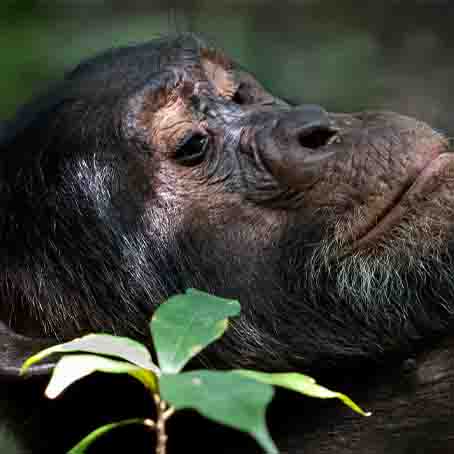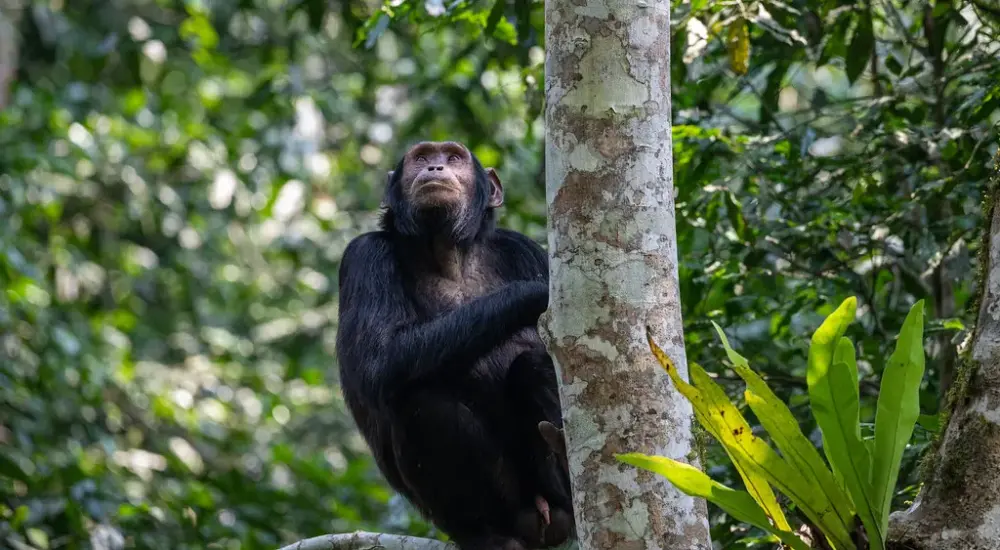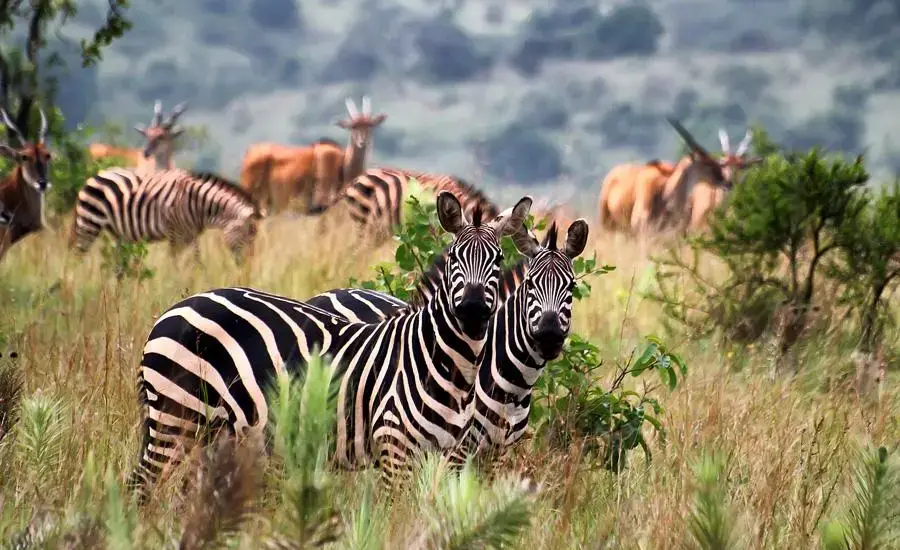Gorillas & Chimps Habituation On a gorilla and chimp trekking experience in Uganda, embark on…
Activities in Rwanda, Rwanda’s top tourism attractions
Activities in Rwanda, Rwanda’s top tourism attractions
Rwanda is a tiny East African country located between Uganda, Burundi, Tanzania, and the Democratic Republic of the Congo. Rwanda has a land area of 10,169 square miles and a population of more than 12 million people. When it comes to things to do in Rwanda, there is more than its dark and awful atrocities perpetrated during the 1994 Rwandan Genocide, a tragic event that has left deep scars in society and is a top activity for practically every visitor visiting Rwanda.
In recent decades, the country has made significant development, becoming a safe, pleasant, inviting, and flourishing destination with excellent infrastructure and much to do on a Rwanda Safari Tour. The tropical green Country covered with apparently unending high terrain gained it the moniker of the “Land of a Thousand Hills”.
Rwanda’s landscape and nature are diverse, with volcanic mountains, savanna plains, and rainforests, making it appealing to nature lovers who can go on a Wildlife safari in Akagera National Park, a Canopy Walk and get a bird’s eye view of Nyungwe Forest, one of Africa’s oldest rainforests, and a once in a lifetime Gorilla Trekking experience in Rwanda’s rich Rain Forest landscape the Volcanoes National Park.
It is located in northeastern Rwanda and borders the Democratic Republic of the Congo’s Virunga National Park and Uganda’s Mgahinga Gorilla National Park. It is Rwanda’s most popular park and the continent’s oldest national park, dominated by the eight Virunga volcanoes.This is the home of the world’s most endangered but magnificent creatures, mountain gorillas and golden monkeys.![]()
You may also trek to Diane Fossey’s tomb, where she spent 18 years studying and protecting gorillas. Explore Rwanda’s warm culture by visiting the Ethnographic Museum, which has intriguing displays on local rituals and beliefs. By the King’s Palace Museum, don’t miss the royal cows and the vocalists who serenade to them. Unwind and rest at Lake Kivu. These and other activities make Rwanda an ideal and intriguing location to visit, with some of the kindest people on the planet.With a list of top sights and activities to do on your Rwanda Safaris Tour, you can make the most of your vacation.
Activities in Rwanda
Experience gorilla trekking in Volcanoes National Park
A once-in-a-lifetime event that captivates visitors from all over the world. Gorilla trekking is the most popular activity in Rwanda’s Volcanoes National Park, a mystique of getting up close and personal with creatures who share 99 percent of human DNA and are thus our closest cousins! Rwanda has undertaken significant conservation efforts to safeguard the creatures.
Experts believe that there are over 700 mountain gorillas in Volcanoes National Park, a huge rise from approximately 240-250 individuals in 1981. The Mountain Gorillas can only be found in three areas, one of which being Rwanda.
Rwanda, which shares a border with Uganda and the Democratic Republic of the Congo, is home to an increasing number of critically endangered species, including 18 habituated Mountain gorilla families, all of which can be located in Volcanoes National Park. Each trekking party is limited to 8 individuals and must secure one of the limited numbers of daily hiking Gorilla Permits for $1,500.
At Gorilla Guardians Village, you may immerse yourself in Rwandan culture.
Volcanoes National Park is more than simply a gorilla sanctuary. It is also a great place to learn about Rwandan culture at Gorilla Guardians Village. The non-profit cultural village, run by rehabilitated poachers, allows guests to try their hand at Rwanda’s most recognized crafts and activities. You’ll learn how to carry a basket on your head, make your own baskets, fire an arrow, and crush grains with a large grinding stone like Rwandan women.
The energetic guides make the whole thing feel like a big party. Keep an eye out for the entire dancing recitals at Gorilla Guardians Village. The traditional dancers, dressed in long straw wigs and skirts, put on a thrilling performance to the beat of rhythmic drumming. You’ll be up and dancing with them in no time.
Hiking and following chimps in Nyungwe Forest National Park
Nyungwe Forest National Park is one of Africa’s oldest and most significant forest protection sites. The Park has the most intact afro-montane rainforest in East and Central Africa. The Forest is home to a diverse range of wildlife, including 1,068 plant species, 120 butterfly species, 100 distinct orchids, 322 bird species, 32 amphibians, 38 reptiles, 86 mammals, and 13 primate species. The majority of visitors come to this rainforest to monitor chimps that park rangers have acclimated to people.
However, spending time with the primates isn’t the only thing to do in the park; the park also has the only canopy walk in East Africa, which is about a 90-minute hike from the Uwinka Visitor Center. You’ll stroll across a 91-meter-long suspension bridge that dangles more than 50 meters above the lush rainforest, giving you a breathtaking bird’s eye perspective of the far trees and mountains.
Akagera National Park Wildlife Safari
The only Savannah national park in Rwanda, Akagera National Park, is a must-see while on safari in Rwanda. It has an area of 1,140 square kilometers and is located two and a half hours’ drive from Kigali City, near Rwanda’s border with Tanzania. The African Parks Organization manages Akagera National Park, whose biodiversity has recovered from near extinction during the Rwandan genocide, making it a safari paradise and one of Central Africa’s largest protected wetlands.
The park’s geography and plants are diverse, including swamps, lakes, savannah plains, mountain landscapes, lakes, golden savannas, and various meadows hidden among neatly terraced hills. From day and night wildlife safari drives and birdwatching to fishing at Lake Shakani and boat safari excursions on Lake Ihema, there is enough to do when visiting this park. It is home to a variety of birds, animals, insects, and amphibians.
Kigali, Rwanda’s capital, on a city tour
Kigali is a dynamic, tidy, green African city with an amazing skyline of office buildings, shopping malls, and luxury hotels. It is also Africa’s cleanest city, surrounded by hills and teeming with friendly people. The government prioritizes the battle against pollution and (plastic) waste. Kigali has served as Rwanda’s capital since its independence from Belgium in 1962. The majority of visitors to Rwanda spend only one night in Kigali before embarking on a gorilla trekking safari, losing out on the colorful culture, cuisine, and scenery of Kigali, Rwanda’s capital.
Plan to spend at least a few days here at the start or end of your trip to enjoy what the city has to offer, such as the vibrant culture and creative scene that can be enjoyed at the Inema Art Centre, a gallery that showcases the works of up to ten local artists in residence, Niyo Art Gallery, the Ivuka Art Centre, stock up on souvenirs at the Caplaki Craft Market, and the Nyamirambo neighborhood, which teems with crafts and art.
Cycling in the Mountains
Rwanda, with its “a thousand hills,” has ideal mountain riding paths. On your bike seat, you have the opportunity to explore and appreciate the scenery of Rwanda. There are specially qualified guides and bicycle technicians for travelers touring Rwanda via mountain riding. Even with the guides, there are obvious signposts and secure camping areas where you may relax while cycling. There are bicycle rentals available if you did not bring your own.
Visiting the King’s Palace Museum
The King’s Palace Museum is located in the Nyanza District in Rwanda’s southern region. Rwanda’s cultural history was organized around Kingdoms. There are two ‘palaces,’ one erected by King Musinga Yuhi V and the other during the time of King Rudahigwa Mutara III. Explore the colonial-style mansion that was previously King Mutara III Rudahigwa’s royal palace in the mid-20th century. The interior decor is especially stunning, combining Rwandan patterns with European-style furniture, some of which belonged to the monarch. The inyambo (holy cows) with their enormous horns are the primary attraction of one of Rwanda’s eight national museums.
Safari for Birds in Rwanda
Rwanda bird viewing safaris may be done at any time of year and from any location. The variety of vegetation in the country provides a habitat for birds practically everywhere. There are Albertine Rift Endemics, Rwenzori and Virunga Endemics, and many additional species that contribute to Rwanda’s total of 650 bird species. Parks such as Nyungwe National Park, Volcanoes National Park, Akagera National Park, marshlands, marshes, and agricultural regions are some of the greatest sites to visit for the best birding experience in Rwanda.
Hiking, Climbing and Visiting Rwandan Villages
Rwanda’s majestic terrain, moderate climate, and amazing animals make it a great spot to explore on foot. Its beautiful scenery provides some of the greatest hiking and walking opportunities. Lake Ngezi, a picturesque tiny lake hidden in a volcanic depression at the foot of Mount Bisoke, is the shortest climb. It takes around three hours in total and is pretty leisurely, with the prospect of sighting wildlife and gazing across to the Congolese woods along the route.
Visit the Bat Cave on a guided tour of underground caves.
The strategic position of Musanze in the slopes of the Virunga Massif is appealing to tourists. Kinigi headquarters are 13 kilometers distant, making Musanze city an ideal base for gorilla monitoring. The Musanze Cave is the most frequented and is 2 kilometers long. The Caves are located in a volcanic zone that dates back 65 million years when lava flows led to the formation of the Albertine Rift Valley. The cave is formed by lava basaltic strata from the volcanoes Bisoke and Sabinyo. The cave contains 31 openings, the majority of which are ceiling collapses. The main cave has a cathedral-sized entrance and is home to a sizable bat population.
Kivu (Lake Kivu)
Rwanda and the Democratic Republic of the Congo share Lake Kivu. It is one of Africa’s most beautiful lakes. The emerald green oasis lake is 2,700 square kilometers in size and 1460 meters above sea level. The freshwater is surrounded by foggy mountains. Lake Kivu is famed for the boat tours that allow you to experience the numerous various islands found within it, as well as its breathtaking clear views of the Congo, which can be a little nerve-racking given its reputation for danger! On the Rwandan side, though, all is serene and peaceful. Enjoy clear views of the lake from one of the hotels where you choose to stay, as well as stunning sunsets at the lake, especially when the sky and sea merge. Relaxing on the beach or swimming is difficult to resist, making Lake Kivu a top activity on the list of things to do in Rwanda for relaxation.
Anthropological Museum
The Ethnographic Museum is home to one of Africa’s most impressive ethnographic and archaeological collections. It is located in Butare, Huye District, some 130 kilometers south of Kigali. The Ethnographic Museum, a gift from Belgium’s King Badouin in honor of Rwanda’s 25th anniversary of independence, is one of six museums that comprise the Institute of National Museums of Rwanda. The seven galleries showcase historical, anthropological, artistic, and archaeological artifacts supported by visual aids, providing visitors with a comprehensive understanding of Rwandan culture.
National Park of Gishwati Mukura
After Volcanoes National Park, Akagera National Park, and Nyungwe Forest National Park, Gishwati Mukura National Park is Rwanda’s fourth and newest national park. The 35km2 Gishwati Mukura National Park, established in 2016, protects two relict areas of the enormous tract of montane rainforest that previously covered the Rift Valley escarpment south of Nyungwe Forest. The park is divided into two forests: the larger Gishwati Forest to the north and the smaller Mukura Forest to the south. The former suffered extensive devastation during the Rwandan genocide in 1994 when refugees began clearing the forest to make space for crops.


